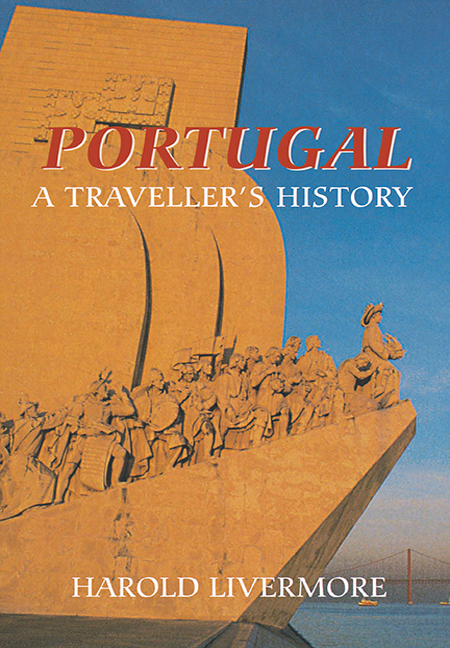Book contents
- Frontmatter
- Contents
- List of Illustrations
- Foreword
- 1 Introduction
- 2 Portugal in History
- 3 Before Portugal
- 4 Islamic Portugal
- 5 Architecture
- 6 Painting
- 7 Music
- 8 Birds
- 9 Fishing
- 10 Portuguese Wines
- 11 Lisbon
- 12 North from Lisbon
- 13 Oporto
- 14 North of Oporto
- 15 Interior Portugal
- 16 Alentejo
- 17 Algarve
- Afterword
- Index
- Frontmatter
- Contents
- List of Illustrations
- Foreword
- 1 Introduction
- 2 Portugal in History
- 3 Before Portugal
- 4 Islamic Portugal
- 5 Architecture
- 6 Painting
- 7 Music
- 8 Birds
- 9 Fishing
- 10 Portuguese Wines
- 11 Lisbon
- 12 North from Lisbon
- 13 Oporto
- 14 North of Oporto
- 15 Interior Portugal
- 16 Alentejo
- 17 Algarve
- Afterword
- Index
Summary
There were innumerable generations of inhabitants of Portugal before they recognised themselves as Portuguese, or even Lusitanians, the name given by the Romans to the people of central Portugal. The first Stone Age or Palaeolithic takes us back a hundred millennia, when the present climate and landscape did not yet exist. The range of primitive artefacts, from stone bludgeons to the refined laurel-leaf blade, can be seen in the Museum of Archaeology and Ethnography at Belém and in numerous local collections. Although Portuguese archaeology goes back to 1865, new sites are constantly being revealed. A project for a hydroelectric scheme in the valley of the river Coa, an affluent of the Douro, was halted because of the discovery of scrawled drawings on the flat rock. The preservation of this ancient art became a question of national concern, and the small town of Vila Nova de Fozcoa acquired a tourist attraction it previously lacked.
The existence in Portugal of cave-paintings of the Magdalenian age, like those of Altamira in Northern Spain and Lascaux in southern France, was unknown until 1963, when the caverns at Santiago do Escoural, near Montemór o Novo in the Alentejo, were explored. These underground galleries have fourteen sketches of animals and humans, supposedly done in about 15000 bc. Most of Portugal escaped the rigours of the last glaciation, and the drawings at Escoural do not reveal any sign of the despair at the disappearance of the reindeer and cold-weather fauna which it is possible to read into the art of Altamira. To the amateur eye they resemble the drawings at Fozcoa made in the light of day, when men had abandoned the life of the caves, and drew in the open on flat surfaces eroded by the small river. In the period between 8000 and 7000 bc, the valleys of the Tagus and Sado to its south were frequented by men who hunted and also gathered shellfish on the shore. The middens were noticed in 1865, and those at Flor da Beira in 1935, with others on the Sado. They are mounds of discarded shells, which also contain the bones of animals and human beings. Some three hundred skeletons have been found, pointing to continuous rather than dense occupation. The former owners of the bones dwelt in the open or behind wind-breaks or rock-shelters: they decorated themselves with perforated sea-shells.
- Type
- Chapter
- Information
- Portugal: A Traveller's History , pp. 37 - 44Publisher: Boydell & BrewerPrint publication year: 2004



